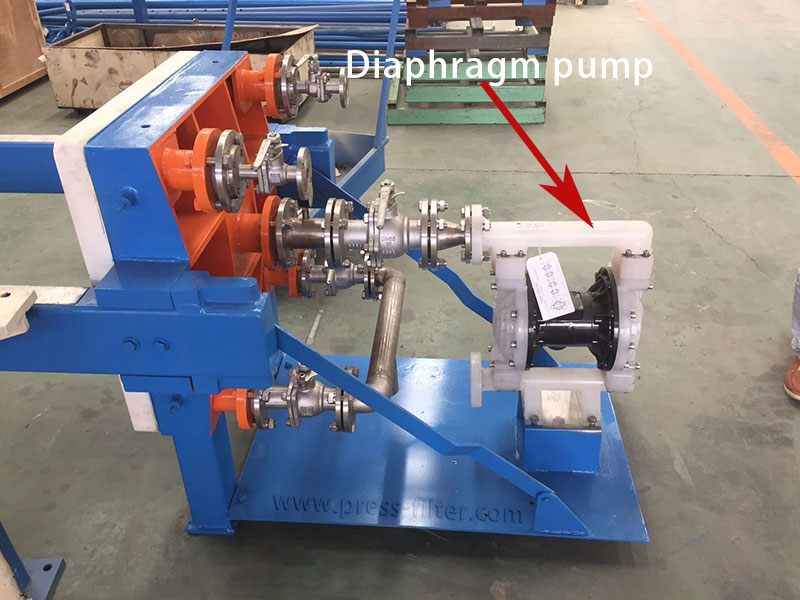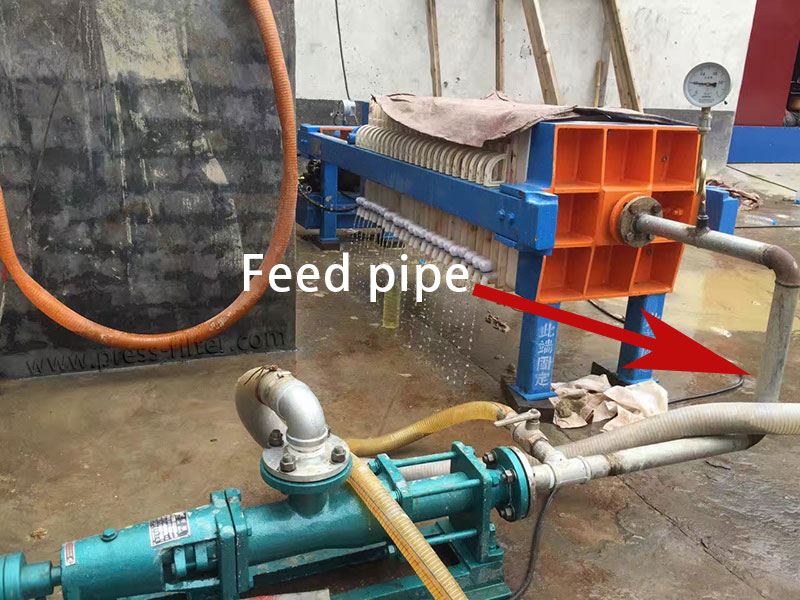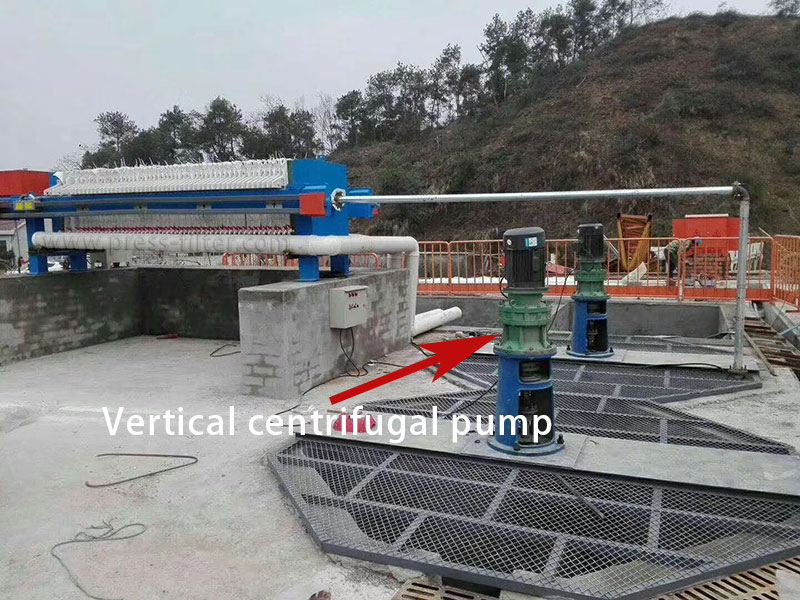Why is the Feed Pump of the Filter Press Feeding Slow?
During the operation of the filter press, some problems may occur that will affect its filtration efficiency. For example, there may be a problem of slow feeding when the feed pump is feeding. There are many reasons for this problem, and it is necessary to find out the reasons one by one and take corresponding measures to solve them. The following are some possible reasons for slow feeding and corresponding measures.

Reasons for Slow Feeding of Filter Press Pump
Improper selection of feed pump: If the selection of the feed pump does not meet the process requirements, such as insufficient flow or head of the pump, it will lead to slow feeding.
Feed pipe blockage: If the feed pipe is blocked during the material conveying process of the filter press pump, the material will not flow smoothly, and the feeding speed will be slowed down. Possible reasons include the inner wall of the pipe not being smooth, the pipe bending radius being too small, and the material containing impurities.
The pump speed is too low: The pump speed is an important factor affecting the feeding speed. If the pump speed is too low, the output flow of the pump will be reduced, thereby affecting the feeding speed. Possible reasons include motor failure, mechanical failure of the pump, etc.
Cavitation: When the pressure at the inlet of the feed pump is lower than the vapor pressure of the liquid, cavitation will occur. After the bubbles burst, the pump body may be damaged, affecting the pump’s performance and feeding speed.
Influence of material characteristics: Different materials have different characteristics, such as fluidity, particle size distribution, and moisture content. These factors will affect the feeding speed of the filter press pump. For materials with poor fluidity, large particle size, and high moisture content, the feeding speed may be slower.
Improper operation: When using the filter press pump, if it is operated improperly, such as frequent start and stop times, overload operation, etc., the pump’s feeding speed may slow down.

The Solution to Slow Feeding of Filter Press
Choose the right pump: Select the appropriate type of feed pump based on filtration requirements, material characteristics, etc.
Clean or replace the pipeline: For the problem of slow feeding caused by pipeline blockage, you can take measures such as clearing the blockage, replacing the pipeline, or increasing the pipeline bending radius to restore the pipeline to its normal state.
Check and adjust the pump speed: Check whether the pump motor and transmission device are working properly, and adjust the pump speed to the normal range to ensure that the pump output flow meets the requirements.
Monitor the status of the pump: Check whether the pressure at the pump inlet is normal. If necessary, adjust the pump operating parameters or take other measures to increase the suction pressure to prevent cavitation.
Improve material properties: For materials with poor fluidity, large particle size, and high moisture content, measures such as adding flow improvers, crushing large particle size materials, and reducing moisture content can be taken to improve the fluidity of the material and thus speed up the feeding speed.
Standard operation: When using the filter press pump, avoid irregular operations such as frequent start and stop, overload operation, etc. Operate in accordance with the prescribed operating procedures to ensure the normal operation of the pump and the feeding speed.

Conclusion
Through the above analysis, we can conclude that there are many reasons why the filter press pump is slow to load. In order to solve this problem, we need to start from multiple aspects. In order to ensure the efficient and stable operation of the filter press pump, we should also pay attention to the regular maintenance of the equipment. When encountering equipment failure, you should seek professional help to repair it in time to avoid unnecessary losses in production due to long-term equipment downtime.

